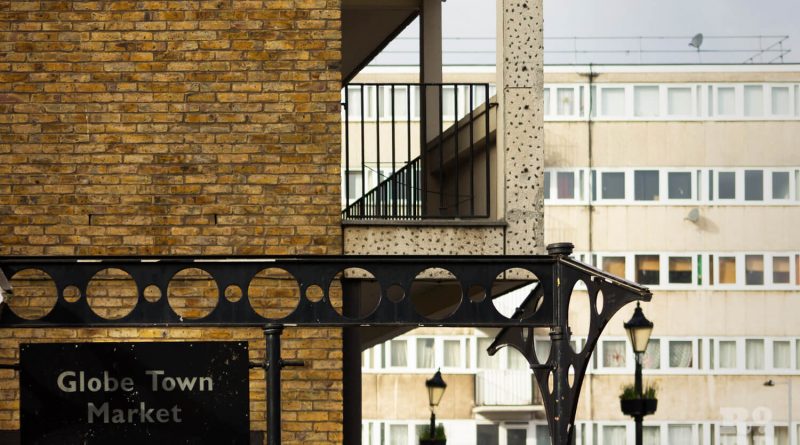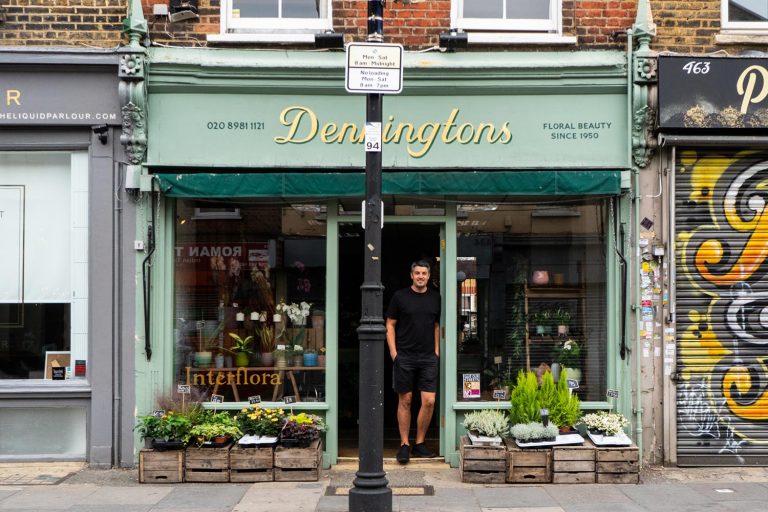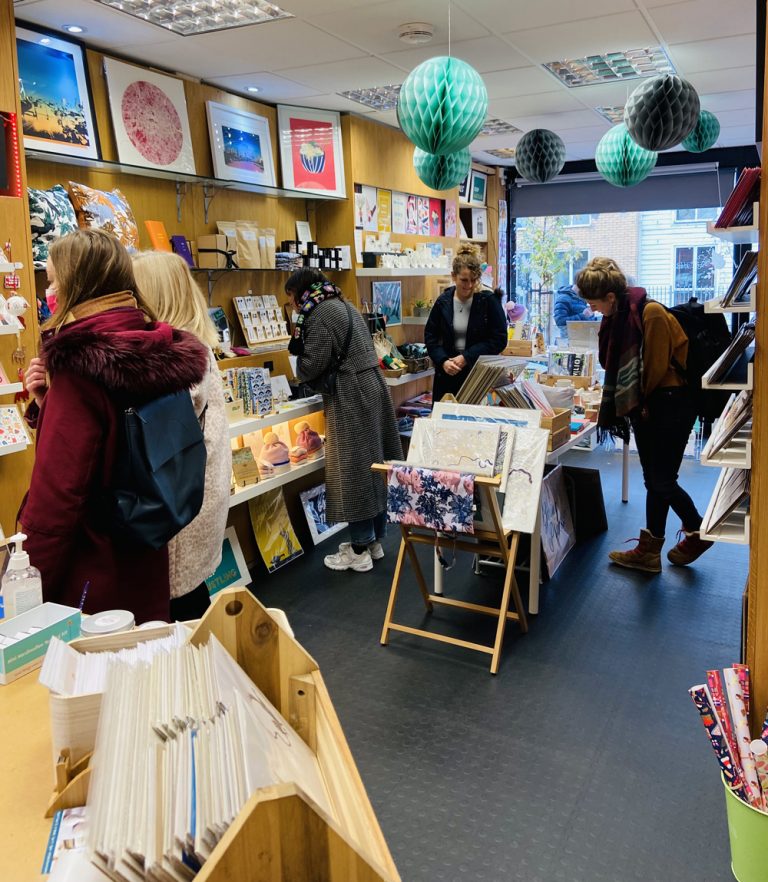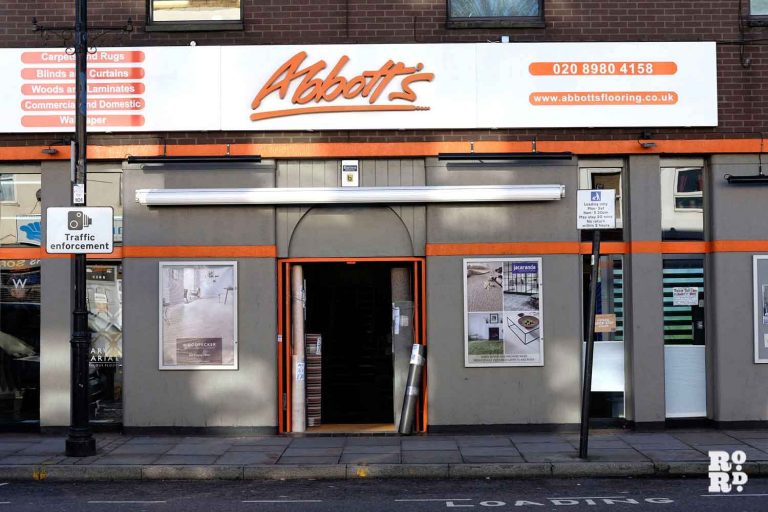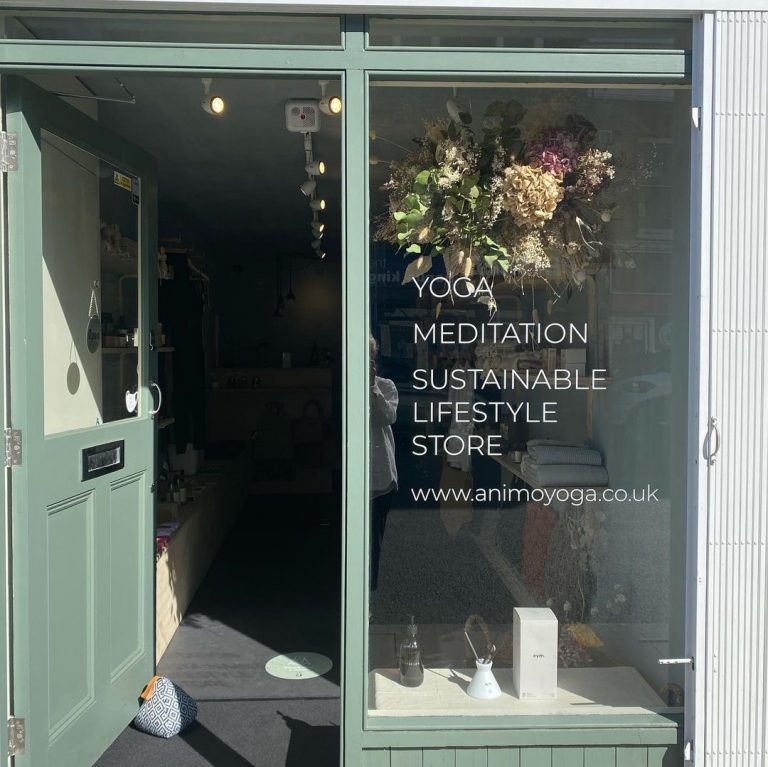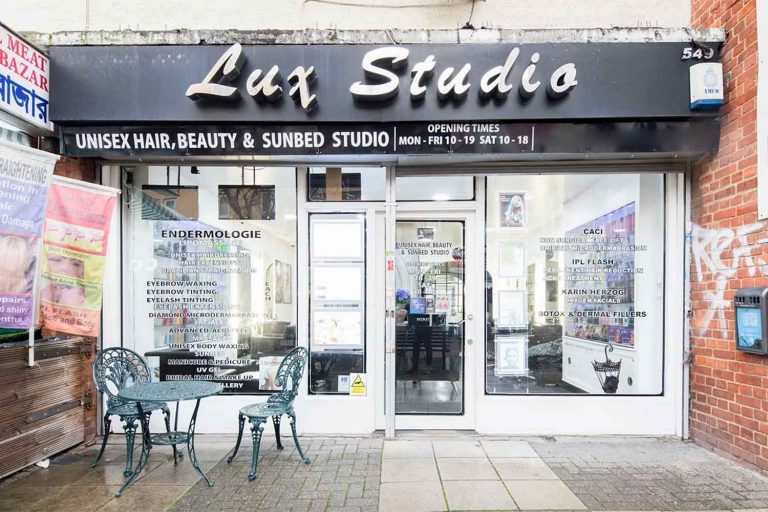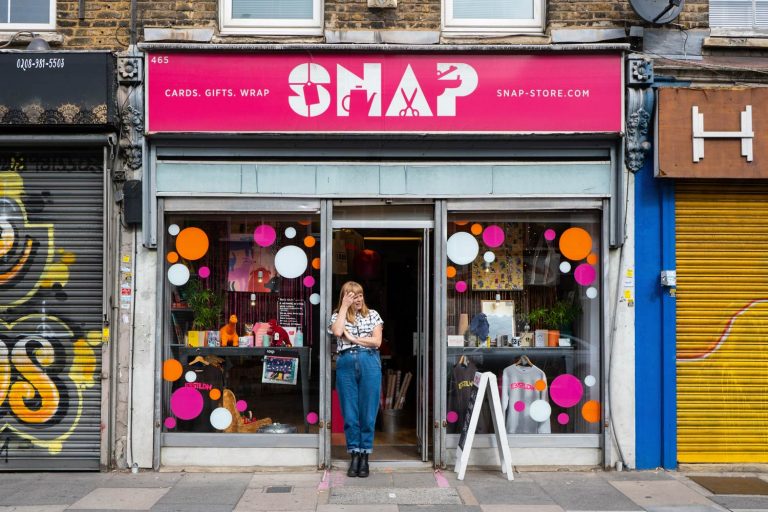Rediscovering Globe Town Market Square [photoessay]
At first glance, Globe Town Market Square may not match one’s expectations of an idyllic marketplace. Located between Morpeth Street and Usk Street, this vast stretch of hardstanding forms Roman Road’s largest public square. However, it is a place not often talked about, despite being somewhere used by many people every day.
The square is enclosed by a collection of post-war residential blocks forming the Greenways Estate. Originally an area of Victorian terraces, the site also housed an infant school during the late 19th century before being cleared by bombing and redeveloped in phases between 1949 and 1959.
Globe Town Market Square was constructed during phase two of the Greenways Estate, which included Clynes House to the South, Bevin House to the West, and Windsor House to the East.
Designed by Yorke Rosenberg Mardall Architects, these residential blocks accommodated commercial space at ground floor, providing the opportunity for retail activity to spill out onto the newly formed marketplace created at the centre of the three buildings. Street vendors could be seen selling fresh produce from wheeled carts which were stored beneath the residential blocks surrounding the square. This marketplace was set to supersede Roman Road’s traditional street market as a hub for retail activity and public life.
During this period, Bethnal Green Metropolitan Borough was considered to be one of the most progressive housing authorities in London. This was best demonstrated at Sulkin House, a residential block constructed at the south east corner of Globe Town Market Square as part of the Greenways Estate development.
This grade II listed structure was designed in 1952 by Denys Lasdun, the architect best known for London’s National Theatre, and Ove Arup, the engineer behind the Sydney Opera House. Intended as a landmark project, distinctive symmetrical wings connect to a central detached service tower via elevated walkways, enabling the stacking of maisonette units in what was considered high density living on a constrained site.
Today, the Globe Town Market remains a focal point for local residents. During the week, a small number of stall owners offer fresh fruit, and vegetables (Herbert’s) and fish (Downey Brothers), using the original barrow stores to the rear of the residential blocks. Like much of Roman Road, these retailers have been a part of the area for generations.
By mid-afternoon, with the school day drawing to a close, the square is enlivened with the bustle of young people. During the weekends, the crowds gather in line for Downey Brothers fishmongers, while resident seagulls congregate for their share of the morning catch. On special occasions the square is appropriated by the local residents for events, including Christmas festivities.
In recent years Globe Town Market Square has suffered from a decline in activity and fears of anti-social behaviour. However, plans to intensify use of the square suggest there is a new chapter for this piece of everyday public space and the people who use it.
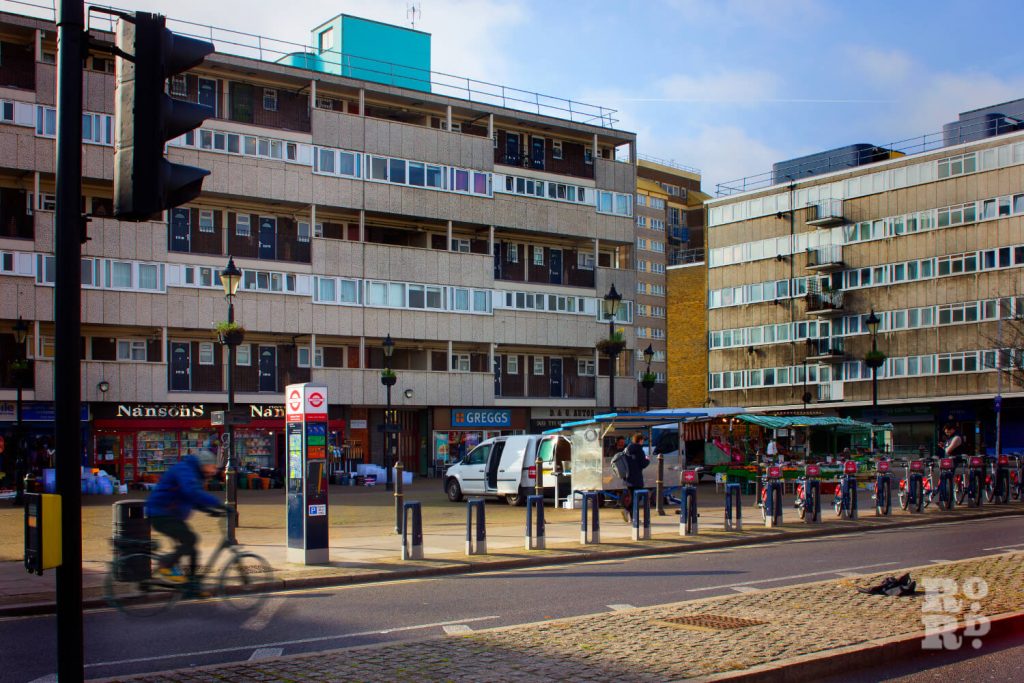
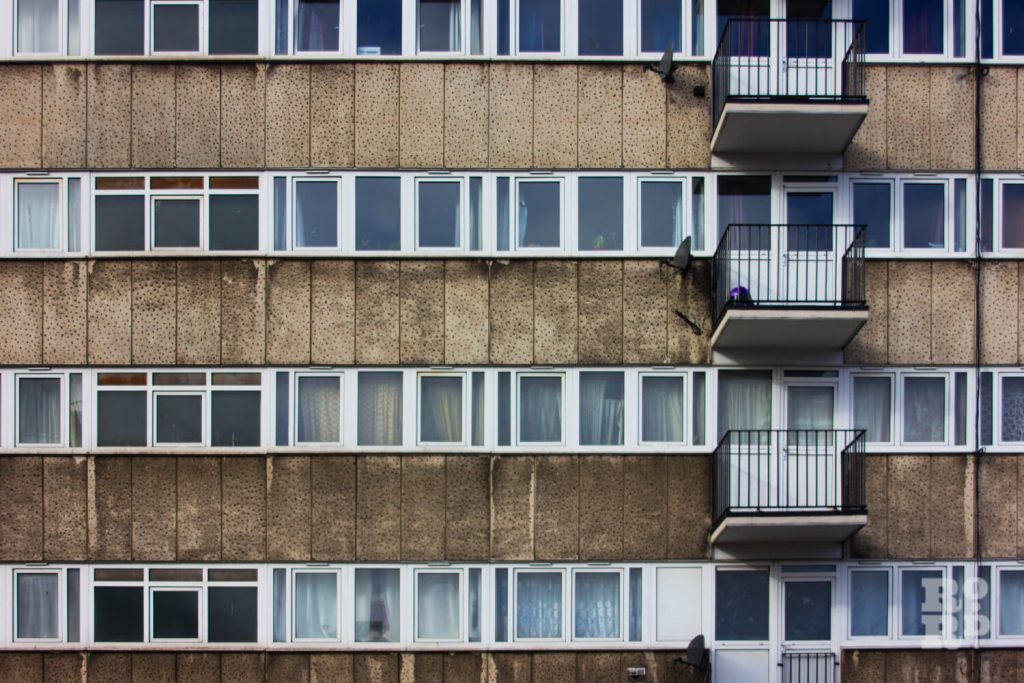
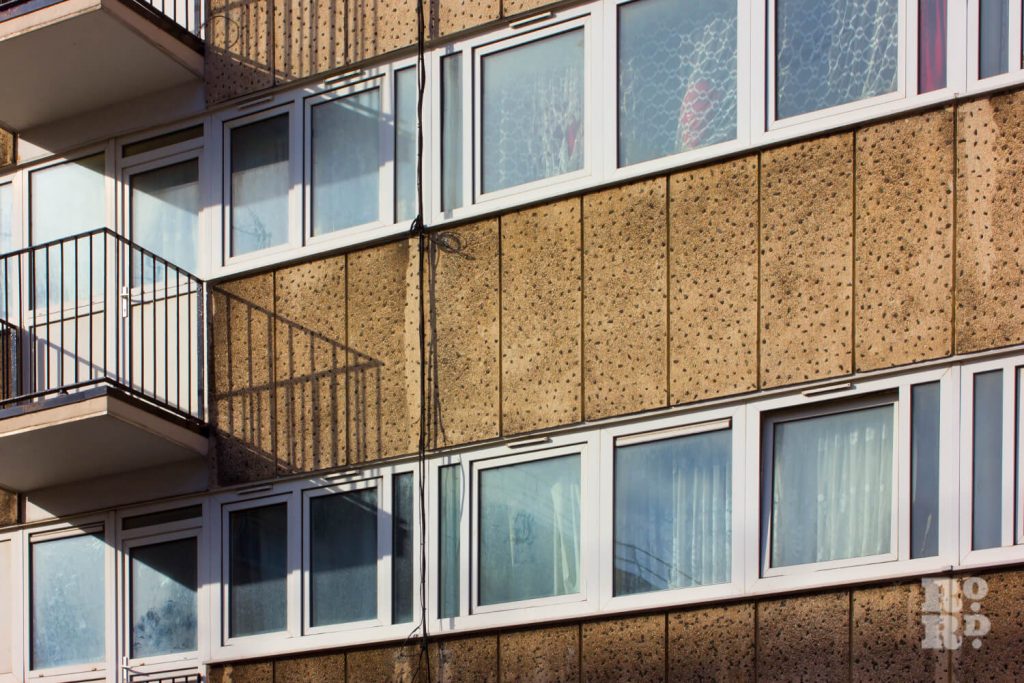
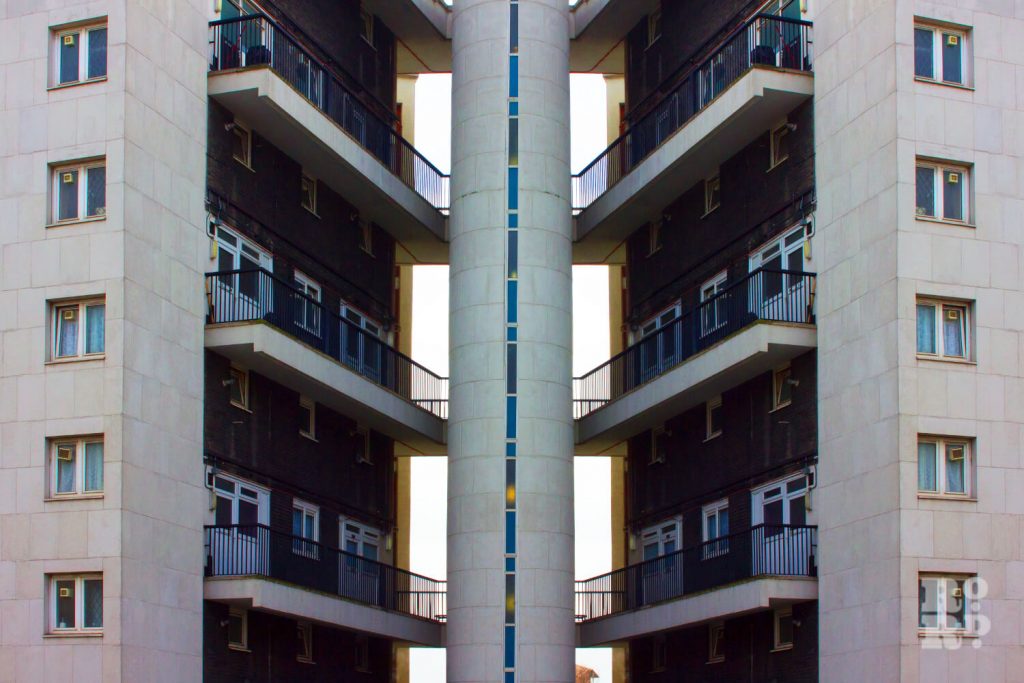
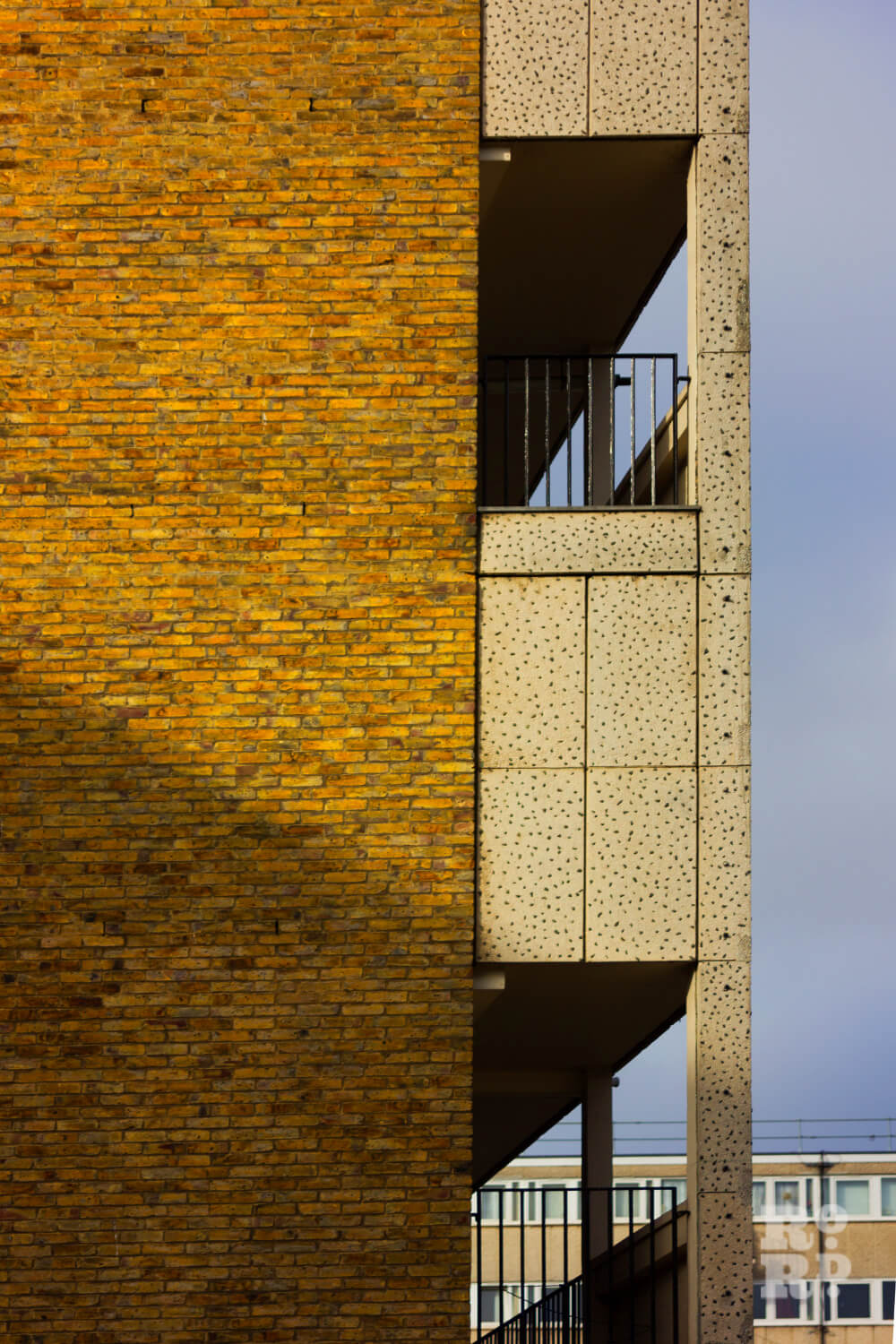
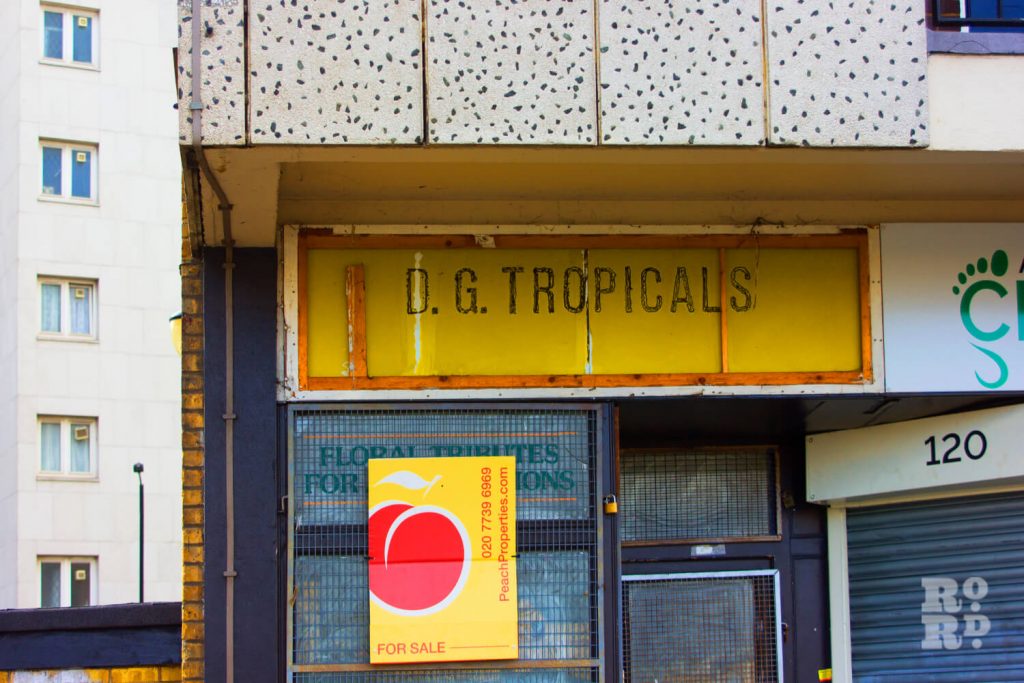
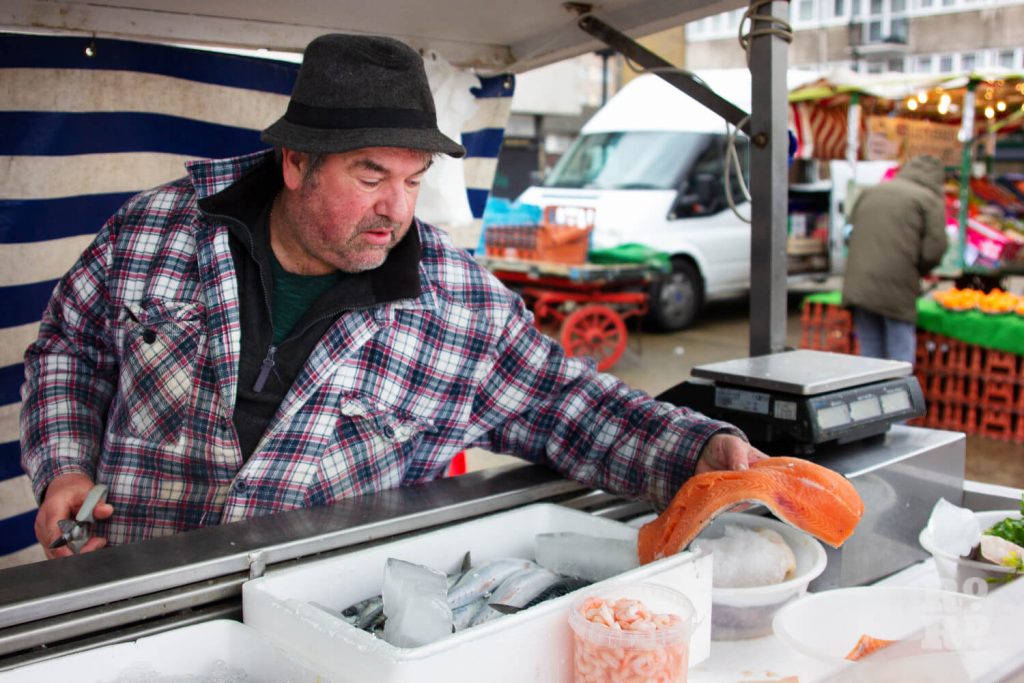
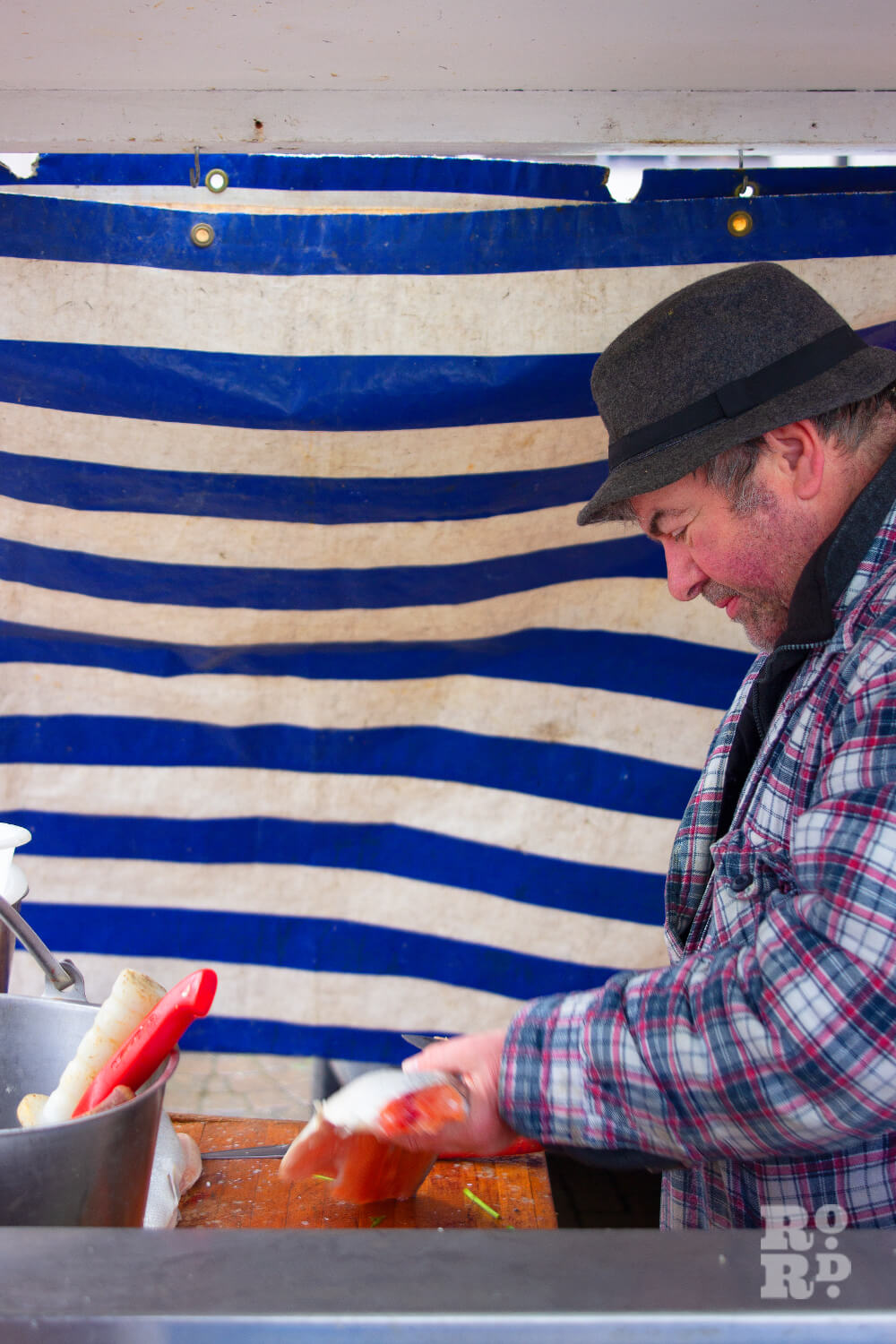

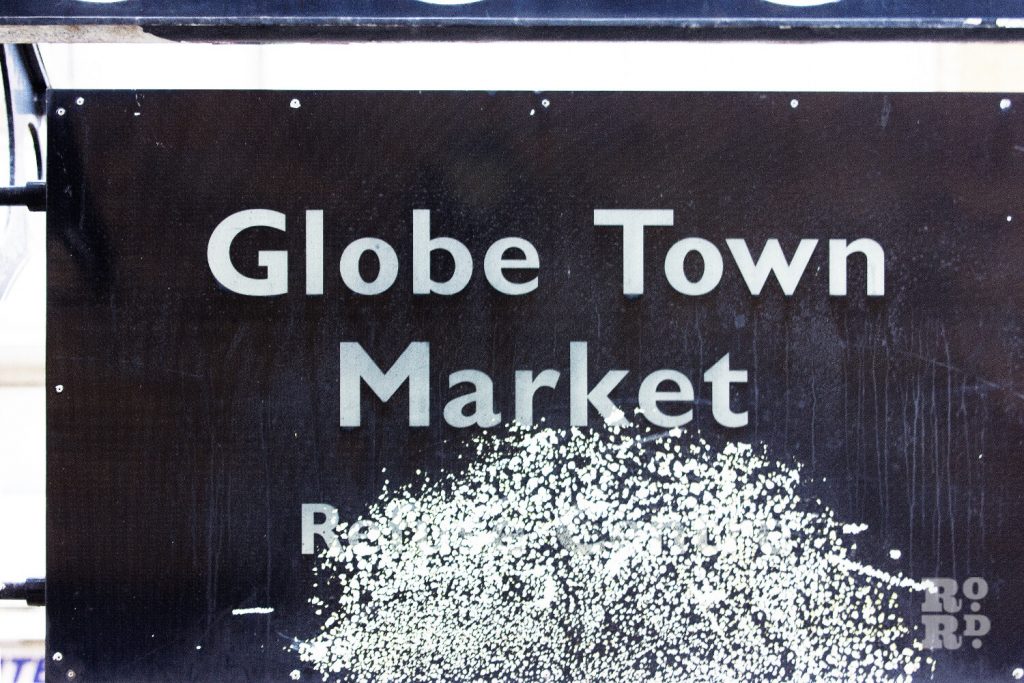
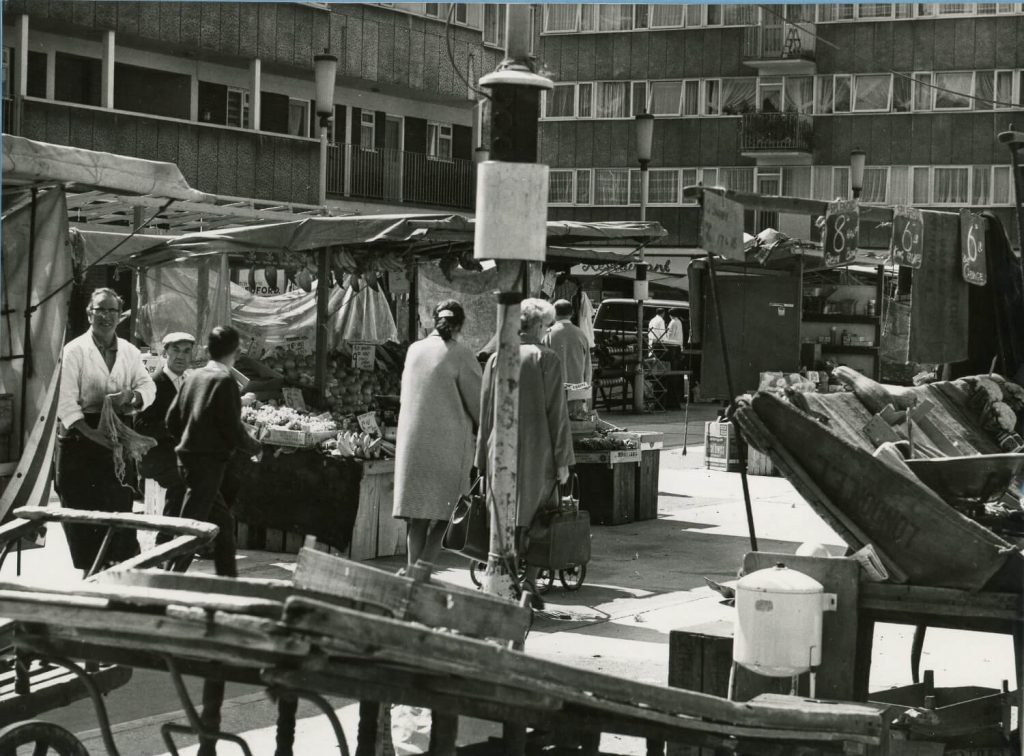
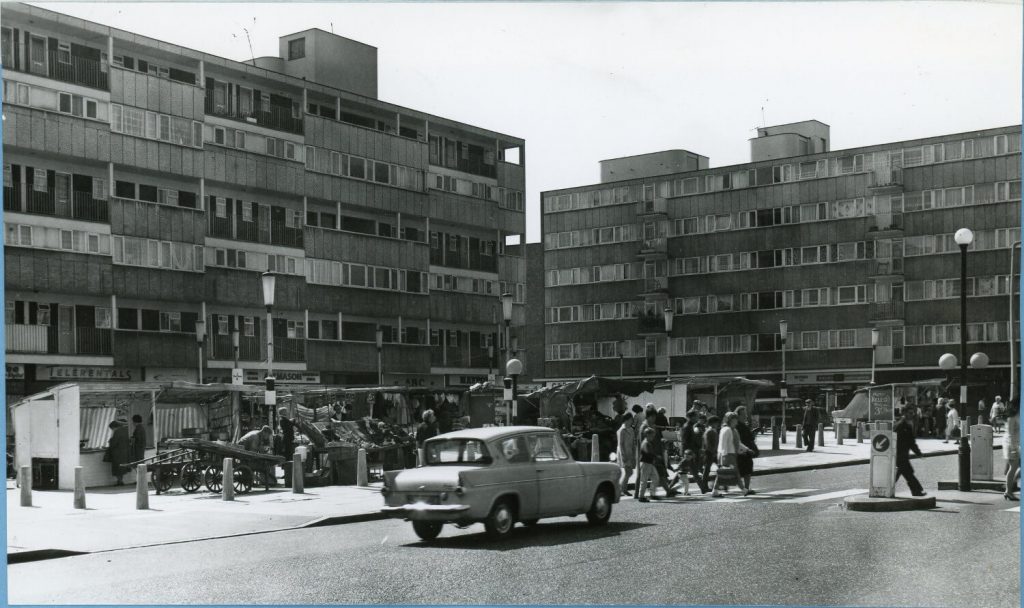
If you enjoyed this article you may like reading about the history of Roman Road Market

